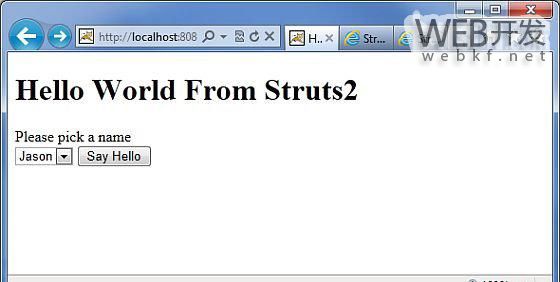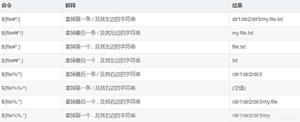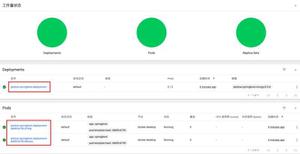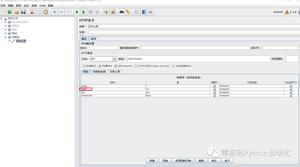Java的Struts框架中的if/else标签使用详解
这些标签执行可在每一种语言找到的一种基本条件流程。 'If'标签可用于本身或与“Else If''标签和/或单/多'Else'标签,如下图所示:
<s:if test="%{false}">
<div>Will Not Be Executed</div>
</s:if>
<s:elseif test="%{true}">
<div>Will Be Executed</div>
</s:elseif>
<s:else>
<div>Will Not Be Executed</div>
</s:else>
创建动作类:
package com.yiibai.struts2;
public class HelloWorldAction{
private String name;
public String execute() throws Exception {
return "success";
}
public String getName() {
return name;
}
public void setName(String name) {
this.name = name;
}
}
创建视图
让我们有index.jsp文件如下:
<%@ page language="java" contentType="text/html; charset=ISO-8859-1"
pageEncoding="ISO-8859-1"%>
<%@ taglib prefix="s" uri="/struts-tags"%>
<!DOCTYPE html PUBLIC "-//W3C//DTD HTML 4.01 Transitional//EN"
"http://www.w3.org/TR/html4/loose.dtd">
<html>
<head>
<title>Hello World</title>
</head>
<body>
<h1>Hello World From Struts2</h1>
<form action="hello">
<label for="name">Please pick a name</label><br/>
<select name="name">
<option name="Mike">Mike</option>
<option name="Jason">Jason</option>
<option name="Mark">Mark</option>
</select>
<input type="submit" value="Say Hello"/>
</form>
</body>
</html>
接下来 helloWorld.jsp 演示使用, if, else 和 elseif 标签:
<%@ page contentType="text/html; charset=UTF-8" %>
<%@ taglib prefix="s" uri="/struts-tags" %>
<html>
<head>
<title>Example of If and Else</title>
</head>
<body>
<b>Example of If and Else</b><br/>
<s:if test="name=='Mike'">
You have selected 'Mike'.
</s:if>
<s:elseif test="name=='Jason'">
You have selected 'Jason'
</s:elseif>
<s:else>
You have not selected 'Mike' or 'Jason'.
</s:else>
</body>
</html>
在这里,如果标签返回true,如果“test”属性中指定的条件返回true。在我们的例子中,我们比较反对“Mike”。如果这个名字是Mike,标签返回true,我们打印的字符串,否则“elseif”块被执行,如果不满意,那么被执行else块。这是从传统的,如果没有什么不同,if, else if 可以在Java语言中。
配置文件
struts.xml 应该像这样:
<?xml version="1.0" encoding="UTF-8"?>
<!DOCTYPE struts PUBLIC
"-//Apache Software Foundation//DTD Struts Configuration 2.0//EN"
"http://struts.apache.org/dtds/struts-2.0.dtd">
<struts>
<constant name="struts.devMode" value="true" />
<package name="helloworld" extends="struts-default">
<action name="hello"
class="com.yiibai.struts2.HelloWorldAction"
method="execute">
<result name="success">/HelloWorld.jsp</result>
</action>
</package>
</struts>
web.xml 应该像这样:
<?xml version="1.0" encoding="UTF-8"?>
<web-app xmlns:xsi="http://www.w3.org/2001/XMLSchema-instance"
xmlns="http://java.sun.com/xml/ns/javaee"
xmlns:web="http://java.sun.com/xml/ns/javaee/web-app_2_5.xsd"
xsi:schemaLocation="http://java.sun.com/xml/ns/javaee
http://java.sun.com/xml/ns/javaee/web-app_3_0.xsd"
id="WebApp_ID" version="3.0">
<display-name>Struts 2</display-name>
<welcome-file-list>
<welcome-file>index.jsp</welcome-file>
</welcome-file-list>
<filter>
<filter-name>struts2</filter-name>
<filter-class>
org.apache.struts2.dispatcher.FilterDispatcher
</filter-class>
</filter>
<filter-mapping>
<filter-name>struts2</filter-name>
<url-pattern>/*</url-pattern>
</filter-mapping>
</web-app>
右键点击项目名称,并单击 Export > WAR File创建一个WAR文件。然后部署此WAR在Tomcat的webapps目录下。最后,启动Tomcat服务器和尝试访问URL http://localhost:8080/HelloWorldStruts2/index.jsp。这会给出以下画面:

现在选择“Mark”,并提交页面。您应该看到翻页

以上是 Java的Struts框架中的if/else标签使用详解 的全部内容, 来源链接: utcz.com/p/208537.html









